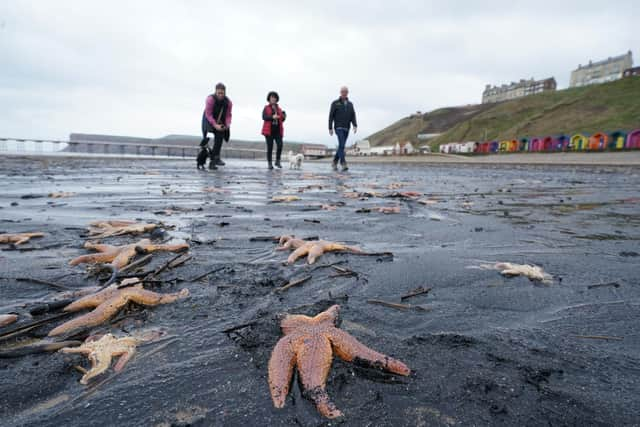Awkward questions remain over North Yorkshire and Teesside sealife die-offs: Andy Brown
So all credit to The Yorkshire Post for not taking at face value two reports from scientists into the mass deaths of sea life off the North Yorkshire coast. Because they both sounded like reliable science but failed to stand up to scrutiny.
The first time this enormous environmental damage was investigated by a team of scientists who were meant to be working objectively on behalf of the public it was concluded that the cause was an algal bloom. This seems at first sight like quite a plausible explanation as it is indeed possible for algae to breed very rapidly in warm nutrient rich conditions and that can suck so much oxygen out of the water that it kills off other sea life.
Advertisement
Hide AdAdvertisement
Hide AdThere were, however, serious problems with the science behind this theory. One was that there had been no reliable sightings of such a dramatic phenomenon covering large areas of the North Sea.


Evidence is normally something that scientists depend on and there wasn’t any. It was just speculation. Another difficulty with the theory is that the deprivation of oxygen would have killed off a very broad spectrum of sea life and yet the majority of the dead animals being washed up were shellfish or starfish. On top of which the deaths went on for week after week long after the temperatures that would have supported any temporary algal bloom had passed.
Those facts meant that this particular scientific theory was plain wrong.
So after stinging criticism from scientists in northern universities the government commissioned a second report which rapidly concluded that the deaths were indeed most unlikely to have been the product of an algal bloom. Unfortunately that report also then proceeded to speculate rather than rely solely on evidence. It suggested that the cause might have been some unknown disease.
Advertisement
Hide AdAdvertisement
Hide AdObjective scientists are meant to proceed by finding evidence and then seeking explanations that might explain those facts. Inventing a new disease without any proof of its existence is a rather strange and unreliable scientific method. Particularly when there is another very possible explanation.
The problem of dead sea life washing up on the coasts of North Yorkshire began at the same time as work began on digging and dredging for the new ‘Freeport’ on Teesside. That work has continued to disturb polluted areas of mud for months and much of the extracted material has been dumped in the North Sea.
To any fair minded observer interested in uncovering evidence regardless of its convenience it looks highly likely that the widespread ecological destruction has gone on for months because attempts at regeneration have been rushed and badly controlled and that has resulted in a massive increase in pollution.
Dumping a bit of mud out at sea is a small price to pay for a much needed scheme to help revise an important part of the economy of the North East. Unfortunately the mud also contains a complex mix of chemicals from the industrial past amongst which is pyridine. Scientists from northern universities have detected that chemical in the residues and it has been proved by repeatable experiments in laboratories that very low concentrations of this chemical kill shellfish whilst it takes higher concentrations to kill other marine animals.
Advertisement
Hide AdAdvertisement
Hide AdFew people want to put barriers in the way of improving the economic prospects of a long neglected part of the north. Rushing through careless development without proper environmental controls is another matter altogether. It doesn’t exactly help the fishing industry or the tourist industry of North Yorkshire to have continual reports of dead carcasses rotting along the coast.
Unfortunately the government which is meant to protect us from this sort of cavalier approach appears to have decided to place its hopes on the theory that rapid economic improvements can only be achieved if controls are dumped and schemes are waved through with light touch regulation.
Those controls and regulations were there for a reason. One community’s rapid development can all too easily result in significant harm for another. Covering up that damage is irresponsible government not ambitious innovation.
We are badly in need of some more plausible science, more responsibility from national government and genuinely responsible regulation and supervision of what is happening in the rush to develop so-called Freeports. We won’t get that unless people from across the North keep up the pressure. What is happening to our coastline is completely unacceptable.
Andy Brown is the North Yorkshire Councillor for Aire Valley from the Green Party.